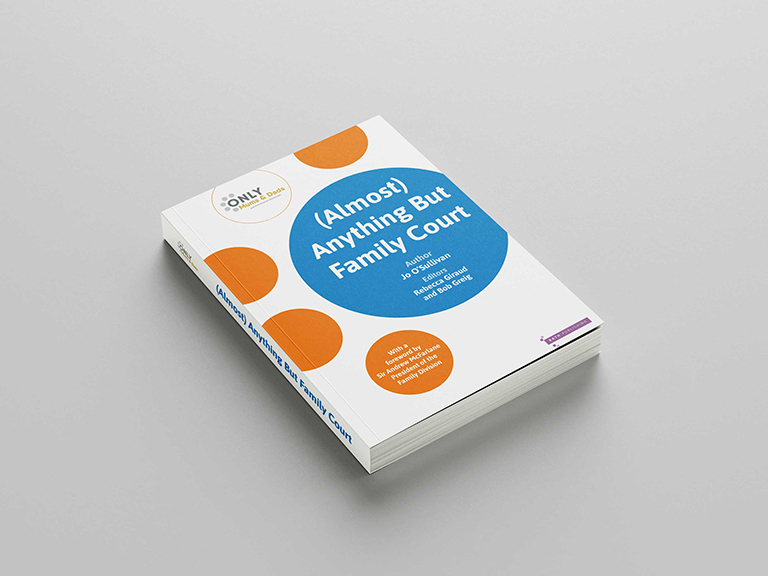The C100 is the title of the application form many people will need when applying to the court for a Specific Issue Order, Prohibited Steps Order or a Child Arrangements Order. When seeking any of these types of orders you may be told by people or even solicitors that you need to apply or put in a an application. The C100 is that form.
The C100 looks much more complicated than it is. Take your time filling it out, be specific and make sure that any other forms such as the C1A, C8 or domestic abuse/child abuse evidence/ MIAM form are attached.
Although it sounds very technical, the form is fairly straightforward. However, if you are completing or preparing an application yourself make sure that you double check that everything which is relevant to your case is completed, otherwise the court may send the application back which will only cause delays.
Most solicitors (if you have one) will have access to the forms through various software packages. If you are completing it yourself then the Gov.uk website is the main source for court forms and should be used over any other website. You can find the C100 form here.
Types of orders
Specific Issue Order: Where there is a dispute between (usually) parents about a specific issue such as schooling or perhaps medical treatment, then a Specific Issue Order is the order you will be asking the court to make.
Prohibited Steps Order: If you want to stop the other parent doing something or from taking a course of action you will be seeking a Prohibited Steps Order, for example if one parent is talking about going abroad and you are worried they may not return with the child.
Child Arrangements Order: Finally, if you cannot agree on arrangements between yourselves as to who your child lives with or spends time with then you will be seeking a Child Arrangements Order.
Completing the C100
On the front page of the form where it asks if there are concerns about risk of harm, you need to tick the relevant boxes and then provide further information on Form C1A. Again, the Gov.UK website is best for this, you can find it here.
When completing the form, it is important to put in as much information as you can, especially when it comes to details of the other party – the court will need this to be able to send a copy of the application to them so that they are aware of the proceedings.
There is a requirement to provide your address details as well. However, if you do not wish to disclose these because you are worried about the other party having your address then a C8 form (again, search for this on the Gov.UK website, you can find it here ) will need to be filled out – this is a very simple form which asks you to list any details that the court is to keep confidential.
When completing the form, it is helpful to put as much detail as you can about the orders you are seeking. You do not need to put the history of the case in lots of detail as that can be explored later but the court needs to know what you are seeking and why.
If you are seeking a SpecificIssue Order or a Prohibited Steps Order then try to be as specific as possible since these are usually for singular issues and the court needs to know why there is a dispute.
For a Child Arrangements Order it is helpful to have an idea ofthe type of contact you are seeking or if you want your child to live with you – the more detail you can give the better.
When filling out a C100 you will see that the front page and pages 4 to 9 talk about a Mediation Information and Assessment Meeting (MIAM, you can read more about what it is here). It is now a legal requirement that, before applying to the court for an order, the applicant (i.e. the person seeking the order) has to have attended a MIAM unless an exemption applies. The idea is to encourage people to resolve issues outside of court between themselves.
Sometimes this is not possible or appropriate, for example in cases of domestic abuse or child abuse – in these sorts of cases you do not have to attend a MIAM. The C100 lists the evidence that the court will accept as proof of domestic abuse or child abuse and you will need to attach that to your form. There are other exceptions such as urgency; insufficient contact details for the respondent or that you have previously attended a MIAM.
If your case does not fit into any of these exceptions then you will need to attend a MIAM and you can use Resolution’s handy search tool to find a trained and accredited mediator in your area (see resolution.org.uk).
Urgent applications
An important point to note when completing a C100 is that the usual time frame for the court to deal with these applications is 4 to 6 weeks. There are times, however, where you cannot afford to wait that long and need an urgent order. In that case you can tick the box on page 1 of the C100 setting out that an urgent order is needed. You will then need to complete pages 11and 12 setting out why the application is considered urgent and whether:
- you are asking for a ‘without notice’ hearing i.e. you need a hearing immediately and the other person isn’t told about the first hearing, being only asked to attend a later return hearing; or
- ‘abridged notice’ is required i.e. there is a deadline (e.g. with a school application)and an issue needs resolving quickly but doesn’t need a without notice hearing.
In those circumstances you need as much detail as possible to show the court why no or shortened notice is needed.
The C100 looks much more complicated than it is. Take your time filling it out, be specific and make sure that any other forms such as the C1A, C8 or domestic abuse/child abuse evidence/ MIAM form are attached.
Additional Reading/Resources
If you are facing court alone many people have found Lucy Reed’s book, ‘Family Court Without A Lawyer’ particularly useful.
The Handover Book is a communication book for separated families. It allows both parents to always be aware of what is happening in their children’s lives as they go from one household to another.
If you want to read more about the emotional impact of separation and how to get yourself back on track Breaking Upwards is a good starting point.
Posted on June 2, 2019














